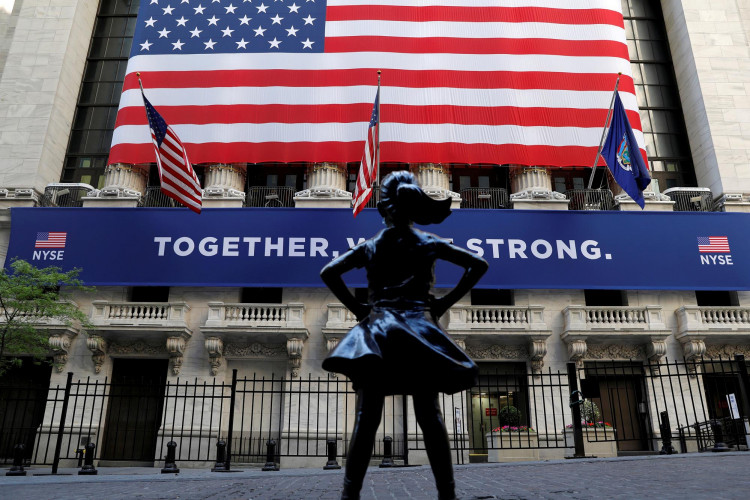US stock futures dropped late Tuesday even as the Dow Jones Industrial Average recorded its most impressive quarter since 1987. At midnight Eastern Time, Dow Jones futures fell about 100 points, or 0.3 percent, while S&P 500 futures and Nasdaq-100 futures also retreated.
The Dow and S&P 500 earlier in the day posted their best quarterly results in more than two decades, while the Nasdaq Composite had its best quarter since 1999, rising from the lows seen in late March, when coronavirus shutdowns ravaged the global economy.
Earlier, stocks on the New York Stock Exchange soared to put a close to heir best overall quarter since 1998 and highest-ever second quarter after the nearly 20 percent run-up of the S&P 500 for the period from April to June. During the second quarter, the Dow and Nasdaq rose by about 17.5 percent and 30 percent, respectively.
The historic run came as market participants braced for a rapid surge in fiscal and monetary policy support to improve the virus-stricken economy, and as states and cities around the country started to relax their mid-quarter lockout restrictions.
Although the market has recovered sharply from its lows in March, recent spikes in cases of coronavirus in some states have kept investors on guard. Dr. Anthony Fauci, director of the National Institute of Allergy and Infectious Diseases, warned Tuesday that if the outbreak continues at its present rate, new cases could exceed one hundred thousand new infections per day.
According to a CNBC data review gathered by Johns Hopkins University, over 12 states have either suspended or rolled back their reopenings as cases in the country soared 40 percent in the past week to an average of around 39,750 on Monday.
In the stock market on Tuesday, investors were hopeful about the previous session's data about better-than-expected US economic results. There have been good economic numbers from China, and this further reinforces the claim that the economic recovery from the coronavirus is taking place in the country and the US – the world's two largest economies.
China posted better than estimated purchasing manager index (PMI) readings for the services and manufacturing sectors, and over in the US, analysts noted a bow out pending home sales figures.
Meanwhile, market players will continue to keep a close eye on the rate of recovery in the US labor market. ADP will release its private payroll figures for June on Wednesday. Economists surveyed by Dow Jones expect to see the addition of 2.5 million jobs, after a 2.76 million decline in May.






